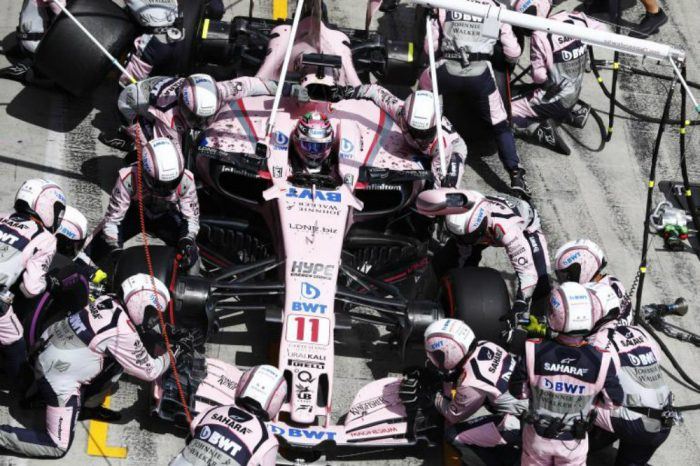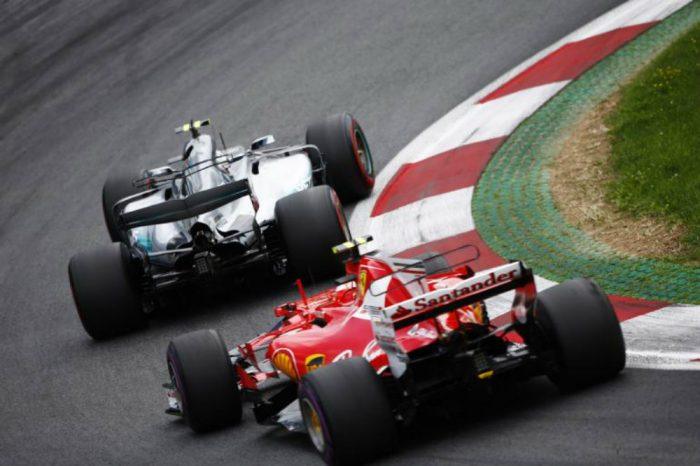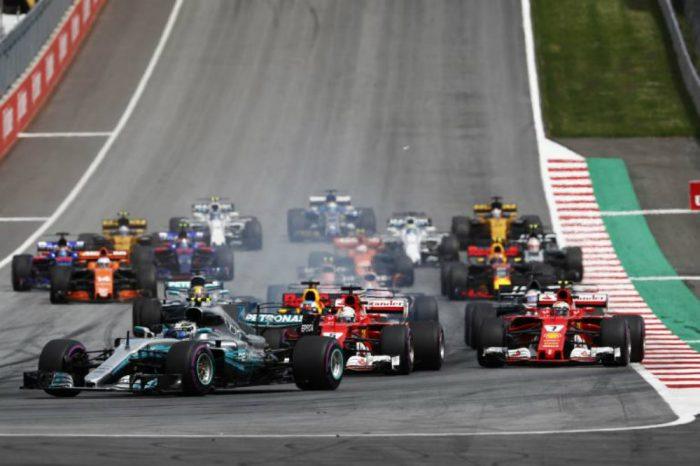There’s an old phrase in military colleges: “amateurs think about tactics, professionals think about logistics.” I’ve been around racing my entire life and, by and large, Grand Prix has been at the top of the heap for me. So I have known, for a very long time, that these teams have gotten larger and larger over time, and that the races have gotten much more far flung. Ergo, I know, on some level, that moving all the people and materiel from one track to the next is a real hassle, but now that I’ve delved into a recent ingenious infographic, courtesy of our friends at Storage Centres in the United Kingdom, I realize this is far from a hassle.
This is a logistical nightmare for any given Formula 1 team to contemplate, let alone envisage on a week in, week out basis. Now realize there are ten F1 teams. It’s like coordinating the Normandy landings every couple of weeks. This is how they do it.
Packing Frenzy
For simplicity’s sake here, let’s just say we’re looking at this process from the end of any given race. All the cars finished, there were no accidents, and nothing was destroyed.
First, the teams start to pack up everything except the cars. The cars are kept in parc ferme conditions, that is, impounded, so they can pass through tech inspection to make sure no one cheated (no lightweight cars or something goofy like hydrazine in the fuel). While the cars are being checked over by the race stewards, everything else is being packed up, most of it into these totally cool anvil-like flight cases you see rock bands use on tour. Jacks, laptops, spares, spares, spares (racing teams carry spare everything) alignment plates, crew helmets, the lot.
By the time the cars roll out of parc ferme about three hours later, most, if not all of the accouterments are crated and ready to move.
They start unbolting everything – okay, most things – into smaller, more easily wrapped and transported bits and pieces. So, the front and rear wings, for instance, get pulled and inspected for any race related damage or fatigue issues, then swathed in bubble wrap to protect their delicate aero surfaces. The mirrors are pulled off as are the wheels and tires – the tires are given back to Pirelli to be examined, checked for flaws, wear damage, and the like, then recycled or, in some cases, sold after the season to collectors (I had a pair of Damon Hill’s tires from the Canadian GP for many years, they made a great coffee table base). The steering wheel is pulled, checked, then placed in its own flight case. I know that seems excessive, but a modern F1 steering wheel runs you around $55,000, so you don’t want to screw it up.
As the car gets broken down further, you get to what’s known as “integral parts.” That’s another way of saying “very important and expensive parts,” and is also a way of saying “the stuff the FIA (the sport’s governing body) watches very closely.” This includes stuff like brakes, suspension pieces, the engine and gearbox, and finally, down to the chassis itself.
Expensive Endeavors
As a way to keep costs down, the FIA limits the number of engines and gearboxes a team can use during the year. I know, it seems kind of silly, you say. “How many engines can a team go through?” you might ask. The answer to that, as it turns out, is as many as they can buy. And since F1 teams have suitcases full of money, you’d be amazed at what they will spend it on, given the chance. Even a small team these days has a yearly budget in the hundreds of millions of dollars. You can imagine what Ferrari or Mercedes-Benz or McLaren spend.
Before rules like this were put in place, teams were known to run special “qualifying engines” for that extra little advantage. They were referred to as “grenade engines” because they were good for three, maybe four laps at full song before blowing up like, well, just like a grenade. They cost $250,000 each. So what? We’ve got a budget of two million dollars a day (that’s no exaggeration), who cares what they cost? Put another one in, let’s make another run for the pole. Before the FIA cracked down on this, there was talk of some teams making entire cars just for qualifying. Cars that were right on the edge of what the composite tubs and structures could withstand. They would only survive for around 10 laps max before they were thrown away. Multiply that by the numbers of drivers on the grid (in today’s case, that would be 20) and you could see where operating costs would grow so high that even NASA would shake their head.
Careful Movements
The brakes are completely disassembled and inspected. The pads and discs are checked and analyzed for wear and stress before being junked (they last for one race, and cost about $100,000 per corner X 4 corners X 2 cars per team X 10 teams X 20 races = The GDP of Burundi). All the fluids from the car are drained, checked for particulate content, then recycled. The suspension: A-arms, bell crank bits, wheel tethers that hold the wheel/tires to the car in the event of an accident, are completely taken down to the individual components. Everything is inspected. If it’s damaged, it’s junked. Foam spacers are inserted into the A-arms to prevent them from expanding and contracting while being flown to the next race.
Material engineers (and top teams have more than one, I assure you) want to keep the usage cycles to a minimum. The engine and gearbox are separated, drained of all the oil, fluid, and gunk. They are inspected for signs of wear leading to possible failure, put under FIA seal, and loaded into their individual flight cases. The chassis, although not taken down to the bear tub, is pretty well stripped down, then wrapped in its own, custom tailored Lycra cover for protection. Carbon fiber, although very strong, is susceptible to puncture damage, so an inattentive swing of a mechanic’s arm with a screwdriver can trash the whole thing.
Logistics & Assembly
Once everything is disassembled, packed, and crated, the teams turn their stuff over to DHL, F1’s logistics partner for getting it from this track to the next. For DHL, this requires transporting 600 tons of materiel, nine days worth of planning, 240 employees, and 100 trucks just to move the stuff to the airport.
Once at the airfield, the parts are loaded onto different planes. One plane gets the critical parts – the cars themselves, engines, gearboxes, IT rack-mounted gear, electronics, things along those lines – and some of the non-critical parts are loaded onto those cargo modules you sometimes see at airports. From the ramp at the next location, it takes DHL around 4 hours to get all the gear through customs and to the next track using 30 freight containers that amount to, on average, about 30 tons of stuff per team. Remember, there are 10 teams.
The non-critical stuff – fuel, marketing swag, work benches, tool carts etc. – gets shipped in 40-foot containers, 4 per team via sea routes or over-the-road. This works out to around 1,000 tons of stuff per team. If a team needs something fast, DHL can overnight it directly to the pit garages, anywhere in the world.
Once teams show up at the new track, it is, as the U.S. Army would put it: “assembly is the reverse of disassembly.” Up to 40 mechanics per team are there just to see stuff unloaded and put in its proper place in the garage while other mechanics start bolting stuff back together again. All the while, car parts and components are checked, checked, checked, and checked again. The last thing a team wants is for a “bad” piece – something beyond its useful life or something damaged – to make it onto a car and break, possibly costing the team a win or injuring the driver.
See? Easy-peasy-lemon-squeezy! The handy graphic below from Storage Centres explains more.
Tony Borroz has spent his entire life racing antique and sports cars. He means well, even if he has a bias towards lighter, agile cars rather than big engine muscle cars or family sedans.

How F1 Teams Move Across The Globe In 48 Hours by Storage Centres.
from Automoblog.net http://www.automoblog.net/2017/08/04/formula-1-teams-move-planet/
via IFTTT
from Tumblr http://peternpalmer.tumblr.com/post/163790710826
via IFTTT



No comments:
Post a Comment